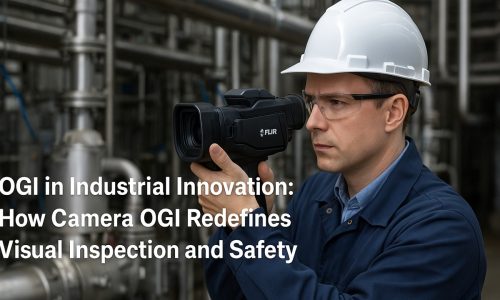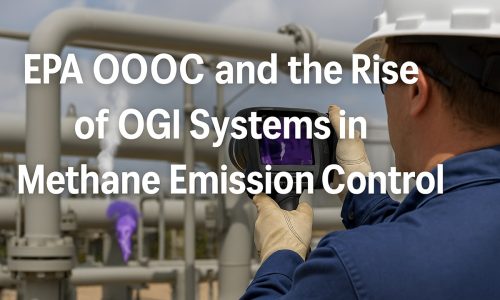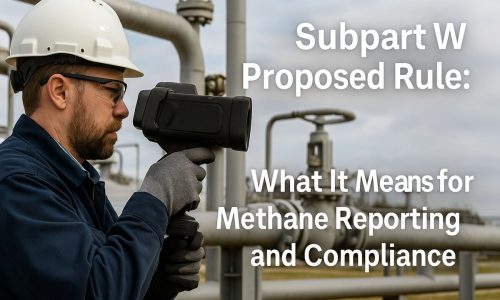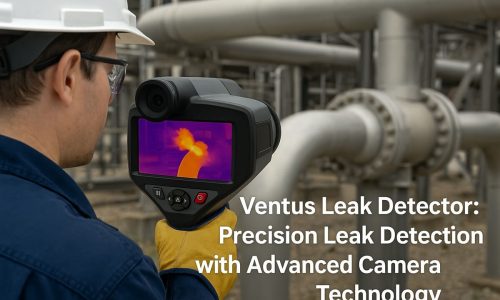OGI — short for Optical Gas Imaging — has rapidly become a cornerstone of modern emission monitoring and leak detection strategies. As regulatory pressures increase and industrial operations seek better tools to manage fugitive emissions, OGI stands out for its precision, efficiency, and visual clarity.
For over a decade, OPGAL has been at the forefront of OGI technology, delivering state-of-the-art solutions that help industries detect and manage gas leaks safely and efficiently. From oil and gas fields to chemical plants and power stations, OGI systems now serve as indispensable tools for environmental compliance, safety, and operational excellence.
What Is OGI and How Does It Work?
OGI technology uses specialized infrared sensors to detect gases that are otherwise invisible to the human eye. Each gas has a unique absorption spectrum in the infrared range, and OGI cameras are equipped with filters and sensors that visualize these emissions in real time.
An OGI sensor is engineered to isolate specific wavelengths that correspond to volatile organic compounds (VOCs), hydrocarbons, and other targeted gases. These sensors enable operators to see emissions — not just measure them — which dramatically accelerates response times and improves documentation during inspections.
Unlike conventional sniffers or handheld gas detectors, OGI cameras offer a non-contact, visual method of leak detection, making it safer and more effective for high-risk environments.
OGI Camera Price: What Are You Really Paying For?
When evaluating OGI camera price, it’s essential to consider not just the upfront cost but the total cost of ownership. Traditional gas detectors often require frequent maintenance, daily bump tests, and sensor replacement. In contrast, OGI systems like Opgal’s EyeCGas 2.0 are virtually maintenance-free and do not require calibration for gas detection under EPA Appendix K guidelines.
Furthermore, the EyeCGas 2.0 offers multiple operator-replaceable filters, enabling long-range detection and multispecies imaging — all in a single unit. Compared to standalone gas sensors or bulky detection rigs, the OGI camera price becomes a long-term investment in safety, compliance, and operational efficiency.
Why OGI Certification Matters
With rising standards across global environmental agencies, OGI certification has become a key differentiator for organizations looking to maintain compliance. In the U.S., the EPA’s Appendix K outlines strict criteria for camera sensitivity, imaging performance, and operational reliability.
The EyeCGas 2.0 from OPGAL is fully certified for NSPS 40 CFR Part 60 Subpart OOOOa and meets industry-specific standards such as ATEX II and Class I Div 2, ensuring that it can be used safely in hazardous environments. This level of OGI certification provides regulatory confidence and reinforces the tool’s value in mission-critical applications.
The Role of OGI Systems in a Changing World
As industries shift toward sustainability and accountability, OGI systems are becoming essential. They allow operators to identify leaks before they escalate into safety risks or environmental violations. The visual nature of OGI also simplifies reporting and supports transparency — key aspects for companies committed to ESG (Environmental, Social, and Governance) standards.
OPGAL’s portfolio of OGI cameras supports a wide range of applications: from upstream gas production to midstream transportation and downstream refining. With cutting-edge optics, unmatched sensitivity, and rugged reliability, the EyeCGas series is purpose-built for performance in the field.
OGI Is More Than a Tool — It’s a Strategy
Embracing OGI technology isn’t just about leak detection — it’s about transforming how organizations manage emissions, prove compliance, and reduce their environmental footprint. With advanced OGI sensors, flexible deployment options, and a growing base of global certifications, solutions like EyeCGas 2.0 enable a smarter, safer future.
In a world where visibility is power, OGI gives you eyes where they matter most.





